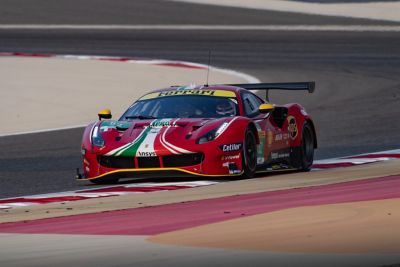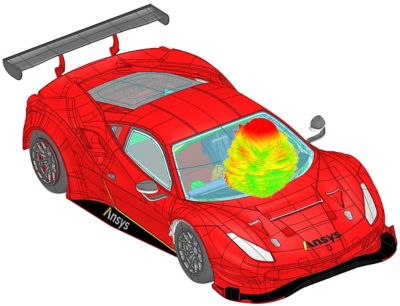-
United States -
United Kingdom -
India -
France -
Deutschland -
Italia -
日本 -
대한민국 -
中国 -
台灣
-
Ansys s'engage à préparer les étudiants d'aujourd'hui à la réussite, en leur fournissant gratuitement un logiciel de simulation.
-
Ansys s'engage à préparer les étudiants d'aujourd'hui à la réussite, en leur fournissant gratuitement un logiciel de simulation.
-
Ansys s'engage à préparer les étudiants d'aujourd'hui à la réussite, en leur fournissant gratuitement un logiciel de simulation.
-
Contactez-nous -
Carrières -
Étudiants et universitaires -
-
S'inscrire -
Déconnexion -
Espace client -
Support -
Communautés partenaires -
Contacter le service commercial
Pour les États-Unis et le Canada
+1 844.462.6797
-
ANSYS BLOG
March 14, 2022
In Real-Time: Ferrari Transitions from 4G to 5G Connectivity for the Win
GT Series racing is all about fast cars and fast data. Modern race cars are essentially powerful computers traveling at more than 200 mph, collecting and sending unprecedented levels of real-time data on the technology and systems behind their performance. In an incredibly high-stakes sport, this data includes key performance metrics with the power to transform outcomes on the track. In an environment where outcomes are determined by tenths of a second, Ferrari Competizioni GT is looking to 5G and Ansys simulation technology to boost connectivity and optimize the continuous flow of data needed leave their competition behind.

For Ferrari, Telemetric Data Analysis is Key
Ferrari’s competitive advantage rests with the engineers and technicians who have spent years pushing the use of telemetric data analysis in pursuit of championship titles. Telemetry in race cars is an in-situ collection of measurements and other on-board vehicle data used to make real-time, informed decisions through continuous integration with simulated data, on the track or after the race on site. In the world of racing, telemetric data analysis is critical to set up checks impacting driver performance and overall car reliability. Every parameter of the car is recorded and analyzed, from the engine and tires to the mechanical and aerodynamic components.
In a racing environment, the transition from 4G to 5G connectivity results in data delivered at a much higher speed and much greater bandwidth, so there’s more real-time virtual simulation on pass. During a race, where success can be measured by a fraction of a second, 5G allows the entire driving team, from pit to driver, faster access to critical real-time data regarding mechanical issues, tire punctures and other critical systems to keep drivers safe on the track. The ability to check the dynamic parameters of the car during a stint also helps Ferrari racing engineers and mechanics anticipate which intervention is needed during a pitstop.
Using Simulation to Find the Best Fitting Components
Ferrari is turning to Ansys simulation technology to assist with the critical aspects of choosing and on-boarding connectivity components. The 5G antenna needs a good beam steering capability to ensure a reliable communication link with the data recorder or black box. The better the quality of the link between the antenna and the elements, the larger the amount of data is exchanged at a higher rate. Installation problems can play a key role in the robustness of the communication link with the data recorder. A good 5G antenna gain is one of the critical points to ensure a good downlink throughput, and to overcome latency delay of 4G technology. This is extremely important in high stakes competitions in the immediacy of the moment, when conditions demand that both box and pilot come together to make the right decision as quickly as possible.
The main beam, or the main lobe in the radiation of an 5G antenna is where the greatest and the most constant energy radiated by the antenna flows and affects the directivity of the antenna. In addition to the main lobe, within a radiation pattern there are several side lobes radiating in different directions where signal strength reaches a local maxima and power is wasted. By reducing the amplitude of side lobes, delivered power is more concentrated in the main lobe resulting in the antenna to radiate in a more efficient way, which reduces unwanted signals, or interferences from different directions. For wide scale angle it is also possible to see the insurgence of the grating lobes. This phenomenon generates a copy of the main beam that can lead to interference. Thanks to electromagnetic simulation, Ansys engineers can predict all these issues to design optimized 5G antenna arrays in less time with greater efficiencies. Furthermore, thanks to the numerical technique of the domain decomposition based on 3D components (CA-DDM), Ansys HFSS enables use and arrangement of non-identical 3D component unit cells in a finite array.

Driving Connectivity Through Simulation During the Development Phase
After selecting the right components, Ferrari engineers face new challenges during the development process, inspiring them to turn to Ansys for simulation solutions. During initial selection, component analysis is performed as the 5G antenna is installed in free space as a fundamental step in antenna design. However, once the component is chosen, in the real world the antenna is installed in the car cockpit and the environment is different. The radiation pattern of the antenna is now subject to numerous electromagnetic field interactions with the car chassis, seats, dashboard, windscreen, and more. To estimate pattern deformation and to prevent unwanted signal interference, the electromagnetic behavior of the antenna in this new environment needs to be evaluated, and different installation points and antenna orientations must be considered.
Ansys HFSS is a field simulator for radio frequency and wireless design that is used specifically for designing and simulating high-frequency electronics, including antennas and antenna arrays, with the capability to simulate and evaluate antenna performance in numerous environments, installation points and orientations. Using HFSS, engineers can run large scale analysis on the dimension of the car chassis at a working frequency of a 5G antenna (a new set-up that has the potential to become an electrically large problem). For this type of analysis, running a traditional finite element methods (FEM) solver requires many computational resources and would burn up too much time. Using an asymptotic solver, such as HFSS SBR+, Ferrari Competizioni GT can obtain accurate results on antenna performance through simulation in record time.
Ferrari Competizioni GT is the pinnacle for performance of GT cars. From a technical perspective, the team works within a complex set of rules to enhance all performance characteristics of their race cars, within a short and clearly defined development window. Ferrari continuously invests in engineering simulation, an investment justified by their winning performance on the track. Ferrari first began a collaborating with Ansys in 1998 to pioneer simulation tools to improve aerodynamics. Simulation is a key advantage for Ferrari, inspiring market technology assessment every few years. Benchmarking against certain criteria, time and time again Ferrari found Ansys simulation products and services to be unparalleled for meeting their requirements. Today, Ansys is proud to be a key technology partner of Ferrari and a strong presence in racing.
Every day we're helping customers like Ferrari Competizioni GT build better 5G antenna designs. If you'd like to take a deeper dive into how Ansys products can help engineers manage and validate 5G design decisions more effectively, be sure to check out our white paper on 5G antenna solutions.










